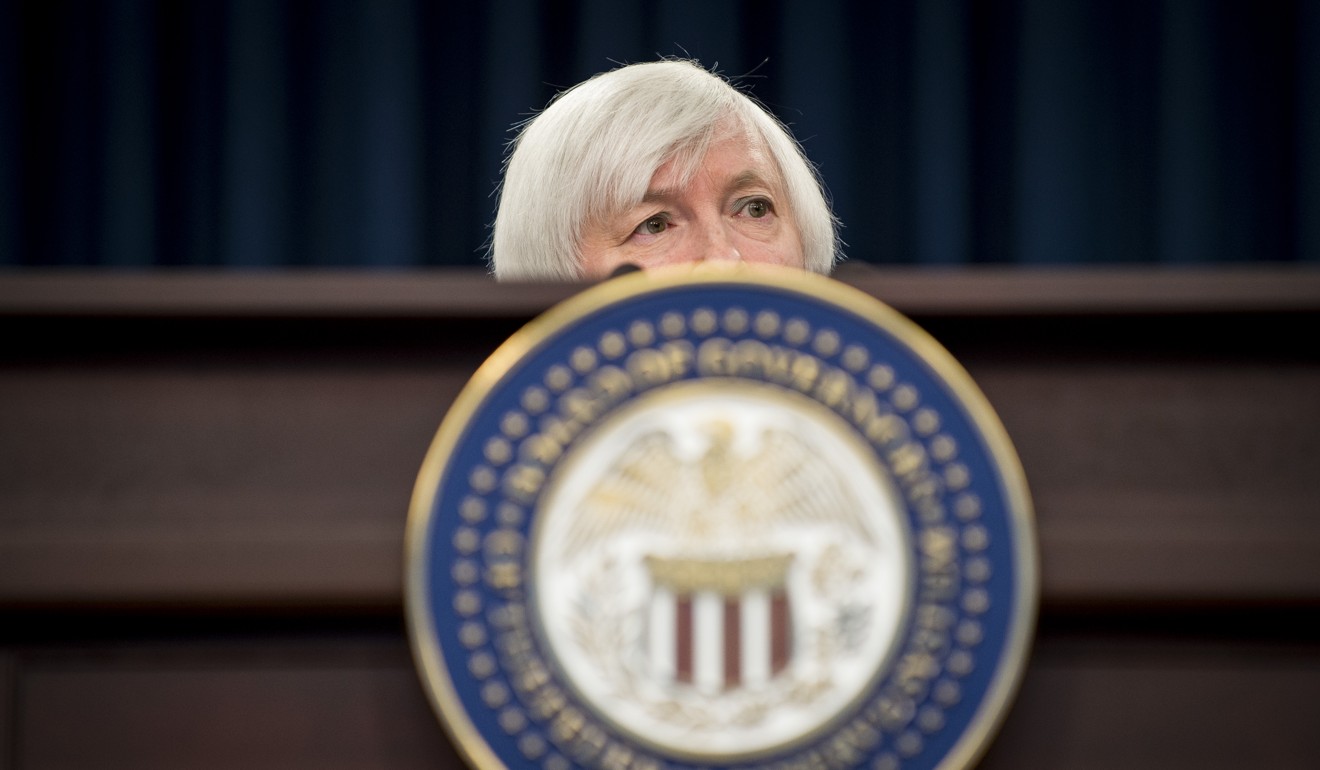
Soggy US inflation numbers could prove a spoiler for the Fed’s ‘normalisation’ policy
At the start of the year, the stars seemed to be aligning for the Fed. But now the conduct of US monetary policy has become a lot more uncertain
At the beginning of this year, the stars seemed to be aligning for the Federal Reserve.
In February, a key gauge of inflation, the so-called personal consumption expenditures price index (PCE), breached the central bank’s 2 per cent inflation target, providing ample justification for the Fed’s decision in March to raise interest rates for the third time since the 2008 financial crisis.
With the US closing in on full employment, wage growth showing signs of picking up and concerns that the Fed risked falling behind the curve if president Donald Trump won Congressional approval for his programme of tax cuts and infrastructure spending, even Lael Brainard, one of the Fed’s most dovish policymakers, was sounding somewhat hawkish.
Yet fast forward three months, and the conduct of US monetary policy has become a lot more uncertain.
A good two months prior to the Fed’s decision on Wednesday to raise rates by a further 25 basis points, key measures of inflation were edging lower again.

The PCE index dropped to an annualised rate of 1.7 per cent in April while the core measure – the Fed’s preferred gauge which strips out volatile food and energy prices – fell back to 1.5 per cent, an even weaker reading than the same time a year earlier.
To make matters more awkward for the Fed, just hours before Wednesday’s rate rise, two other inflation readings, together with data on retail sales, came in weaker than expected.
The absence of a self-sustaining increase in inflation despite what remains an extremely buoyant labour market that has driven unemployment down to below the Fed’s estimate of the long-term jobless rate, is a concern for policymakers which, should the disconnect persist, would severely undermine the case for further rate hikes.
Yet the good news is that there has never been a better time for the Fed to tighten policy.
In the period between the Fed’s March rate increase and Wednesday’s jump, the yield on benchmark 10-year Treasury bonds has dropped nearly 40 basis points to 2.1 per cent, while the dollar index – a measure of the performance of the greenback against a basket of other currencies — has fallen a further 4 per cent to its lowest level since just prior to Trump’s election as US president in early November.
The easing in financial conditions in the face of a tightening in policy is, from the Fed’s standpoint, fertile ground for hiking rates: not only are market conditions supportive of economic growth, investors are taking the Fed’s rate hikes in their stride, in stark contrast to the “taper tantrum” in May 2013 in response to the central bank’s unexpected decision to begin withdrawing stimulus.

Yet this remarkably benign backdrop in markets – financial conditions have eased partly because of the dimming outlook for a meaningful fiscal stimulus package as a series of political scandals engulf the Trump administration – is encouraging global investors to pile into so-called “risk assets”, fuelling concerns about overstretched valuations and historically low levels of volatility.
The latest data from the Federal Deposit Insurance Corporation (FDIC) shows that banks are starting to reduce their exposure to the US$1.2 trillion car loan market because of a surge in delinquencies in an ominous echo of the sub-prime mortgage crisis.
Meanwhile, spreads (or the risk premium) on the highest quality US “junk” bonds have narrowed to their lowest level since July 2007.
Last week, technology stocks – which have driven the bull run in equities – came under heavy selling pressure.
These warning signs in markets come just when the Fed is about to embark on the next step in its “normalisation” of monetary policy: reducing the size of its balance sheet that has swelled to $4.5 trillion since it launched quantitative easing (QE) in 2008.
While the Fed has so far been able to raise rates without unsettling markets, the combination of further hikes and the unwinding of its balance sheet ups the stakes in the crucial relationship between markets and the world’s most influential central bank.
While Fed chair Janet Yellen brushed aside concerns about soggy inflation at her press conference on Wednesday, bond investors – whose views about the scope for further rate hikes were converging with those of the Fed at the start of this year – have now become much more sceptical about a pick-up in growth.
If inflation data continues to disappoint, bond markets will be proven right, damaging the credibility of the Fed and, quite possibly, triggering a nasty sell-off in equity markets which are priced for much stronger growth.
Over the coming months, all eyes will be on the next batch of inflation readings.
Nicholas Spiro is a partner at Lauressa Advisory

